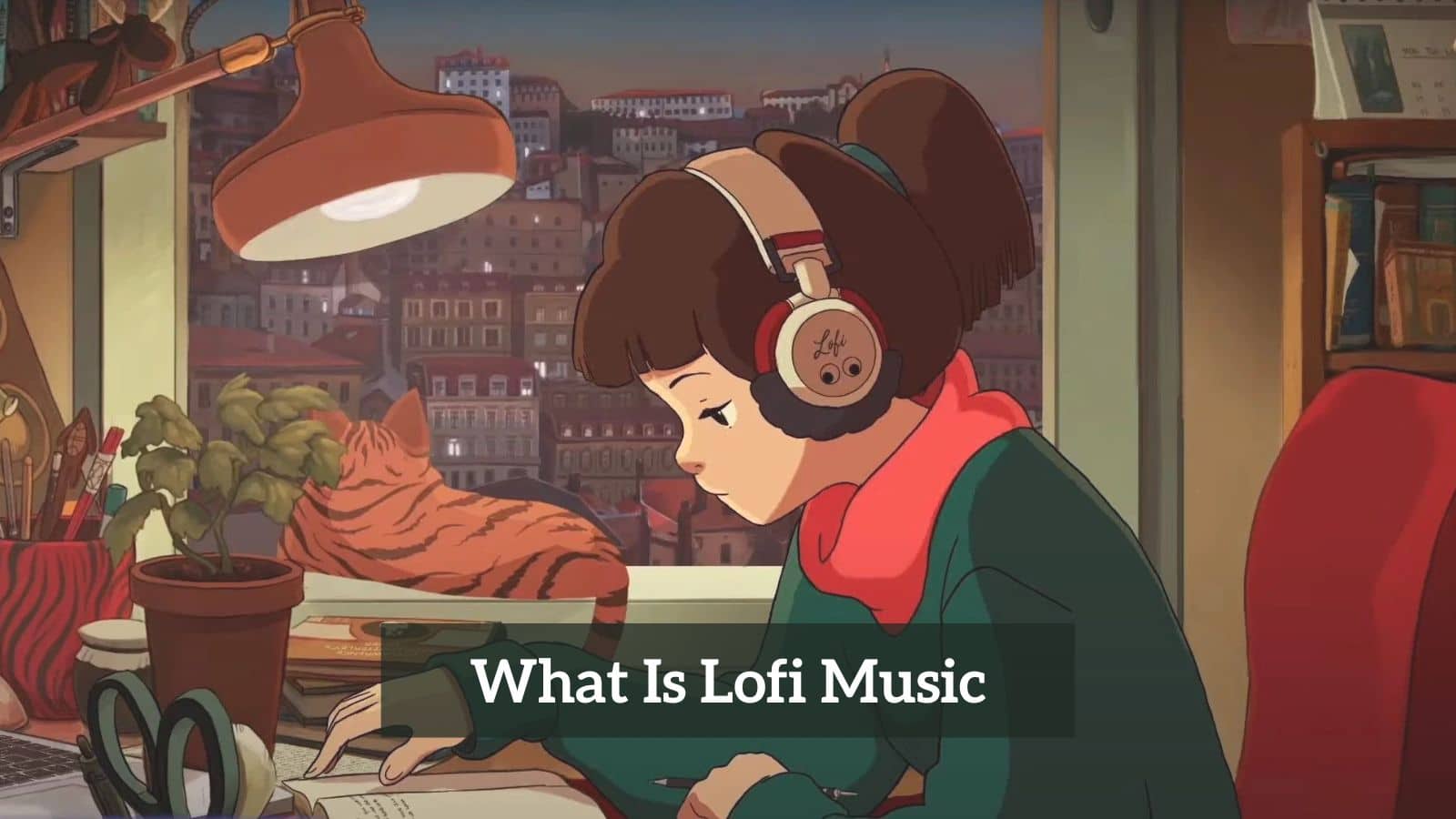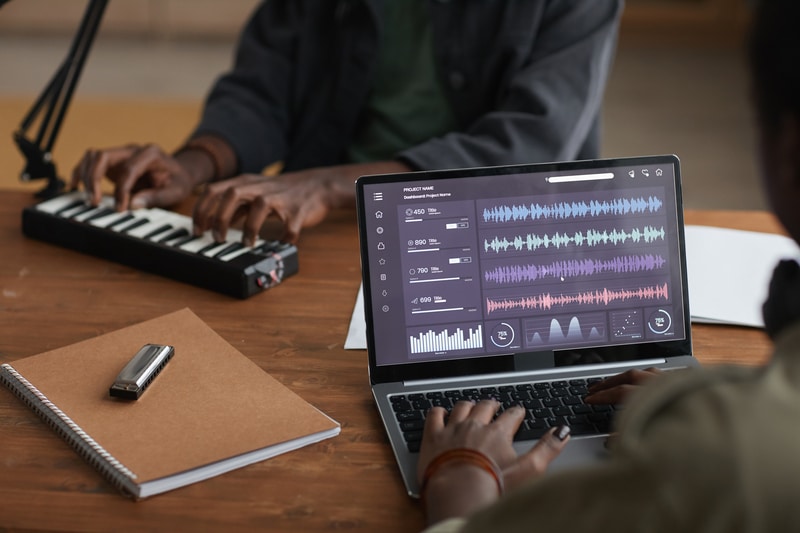
Lofi or lo-fi, refers to sound recordings that are less than perfect from a professional standpoint.
Lofi is an abbreviation referring to ‘flow fidelity,’ which was initially used to refer to low-quality recordings that featured background noise, low humming from equipment, phonographic imperfections, or performance mistakes.
They made the recordings with inexpensive recording equipment—the opposite of high fidelity (hi-fi) recordings.
What Is Lofi Music
During the 1980s and 1990s, producers regarded lofi recordings as more ‘authentic’ sounding as opposed to high-quality recordings which may come across as too clean or polished.
Today, lofi represents a subgenre within the electronic music scene and shares characteristics with downtempo, chillwave, and lofi hip-hop music.
Lofi music is especially appreciated and used in many punk, indie rock, and hip-hop circles because of its aesthetic and economic associations—it gives music a ‘home-made’ and DIY feeling.
Lofi music mixes elements from house, jazz, easy listening, and hip-hop beats and samples together while emphasizing the home-made and DIY quality and approach.
The resulting music has a retro feeling because of analog mixing equipment. Many people regard lofi music as the best background music, and many students claim it is the perfect music to listen to while they’re studying and helps them achieve good marks.
Traits of Lofi Music
We’ve already touched upon the dominant traits of lofi music in the introduction, so let’s unpack them below:
- Jazz chord progressions are an important element in lofi music because of their relaxing sound.
Because jazz chords are sometimes ‘tinged’ with qualities not found in traditional Western music, these chords help to keep the music interesting, and the listener engaged without making them sleepy.
They can also incorporate jazzy rhythms into lofi music—especially in the drums and bass along with piano. Some artists also incorporate drums, guitar and horns into their music, but this depends on the type of composition.
- Even though lofi is typically instrumental music, artists also use samples and sound effects to support their musical compositions. Effects such as the crackle of a vinyl record, nature sounds, and white noise are not uncommon.
Sometimes vocal samples (like this one by Lausse the Cat) and visual images are included to draw attention to lofi’s connections with anime.
- Lofi music forms a similarity with hip-hop because of its considerable use of drum loops forming the rhythms.
Live and recorded samples are used, but beatmakers prefer live samples because they’re easier to change with a DAW (digital audio workshop). The tempo is between 70 and 90 BPM, putting lofi music in the low- to mid-tempo range.
Where Did Lofi Music Start?
Lofi doesn’t have a central location like other types of music or genres, but began as a genre on the internet.
Because lofi is decentralized, there isn’t a physical experience, music shops do not stock physical CDs because there are none. Artists rarely go on tour or perform live—the genre is purely based on the internet.
In 2013 YouTube introduced livestream channels and lofi artists quickly made use of this phenomenon to craft lofi playlists.
Chillhop pioneer Nujabes and hip-hop artist J Dilla composed the soundtrack to Samurai Champloo back in 2004 already and forged an unforgettable link between Japanese animation (anime) and lofi music.
If you listen closely to the song Aruarian Dance you’ll be able to distinguish the melody from Ravel’s Pavanne pour une dauphine défunte (Pavanne for a Dead Princess) as well.
ChilledCow, now known as Lofi Girl, became an ‘unofficial’ lofi radio station on YouTube through their continuous live stream.
By 2017 they have broadcasted around 13,000 hours of music to 7.5 million subscribers. The link between anime and lofi music is clear when you look at their livestream.
Notable lofi Artists and musicians
With our knowledge about lofi music, let’s dive deeper into the artists and musicians associated with the genre.
Lofi Girl
The anime girl shown studying in Lofi Girl’s music videos and livestreams on YouTube, became so popular with fans that it was adopted and even turned into a plush toy. You can even create and download your own version of Lofi Girl by following this link.
We know we mentioned most lofi artists do not release music commercially on CD or vinyl, but Lofi Girl is one exception to this rule and has an amazing online store when you can buy merchandise and vinyls.
The image of Lofi Girl is taken from the animated film Whisper of the Heart by Studio Ghibli.
CollegeMusic
CollegeMusic was launched in 2014 by then-thirteen-year-olds Jonny Laxton and Luke Pritchard as a YouTube channel featuring Neo-Soul, RnB, and alternative electronic music.
In 2016 they were one of the very first channels who embraced the livestream category as well. They became one of the well-known names in the lofi community and regularly feature tracks aimed at relaxation and studying.
Initially, their YouTube channel was aimed at sharing their new discoveries in the RnB, Neo-Soul, and alternative electronic music genres, but soon they started offering lofi music.
CollegeMusic has various compilations such as In the Loop featuring jazztronica, soul-tronica, and hip-hop beats and various livestreams.
Nujabes
Jun Seba (1974—2010), more widely known by his stage name Nujabes (Nujabesu or ヌジャベス in Japanese) is one of the most recognised names in the lofi world.
He composed the soundtracks to Samurai Champloo and Cowboy Bebop helped to cement the relationship between anime and lofi music. Nujabes association with the genre often has people referring to him as the godfather of lofi hip-hop.
Modal Soul was Nujabes’ second and final studio album, which showed off his talent for blending jazz influences with laid-back hip-hop beats. Nujabes mixed the old and new into a seamless, boundary pushing world of music.
Conclusion
Lofi music shows the power of a creative community coming together without geographical boundaries. While it is difficult to describe what lofi music is, it’s part of its appeal.
The home-made, DIY approach to early lofi music gave birth to a whole new genre of music enjoyed by millions of listeners world-wide.


